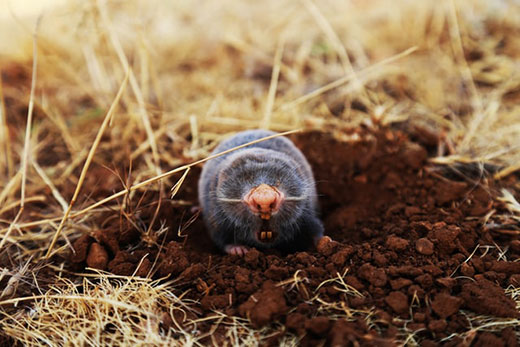
They may be cute, but moles can cause a great deal of damage to yards and home lawns.
K-State plant expert outlines best way to control moles in home lawns
Rows of raised ground are a sign of problems
April 16, 2020
MANHATTAN, Kan. – They may spend much of their time underground, but it’s the tell-tale signs that moles leave above the ground that irks many homeowners.
Known to be efficient foragers, moles make meandering paths of upheaved soil on home lawns as they hunt for earthworms and other sub-surface delicacies. The tunnels serve as a travel lane for a period of time, but once the food source goes dry, moles often abandon the tunnel – leaving an unsightly bulge on the surface.
Ward Upham, a horticulture specialist for K-State Research and Extension, says many home remedies have been tried, but few have proven reliable for controlling moles.
“The best control method is the use of traps,” Upham said.
To determine where to set traps, he suggests using a broomstick to poke holes in a number of runs. “Check a day later to see which runs have been repaired,” he said. “These are the active runs and should be used to place traps.”
Upham said once the trap is placed in the active run, replace the soil and secure the trap so that the recoil won’t lift the trap out of the ground. Then, push down two more holes on either side of the trap so the mole is caught when it tries to repair the holes.
“Move traps if no moles are caught within three days,” Upham said.
K-State’s extension wildlife management program has more information online for mole control, including videos and printed material.
Upham and his colleagues in K-State’s Department of Horticulture and Natural Resources produce a weekly Horticultural Newsletter with tips for keeping yards healthy and beautiful year-round. The newsletter is available to view online; interested persons can also subscribe to have it delivered by email each week.

